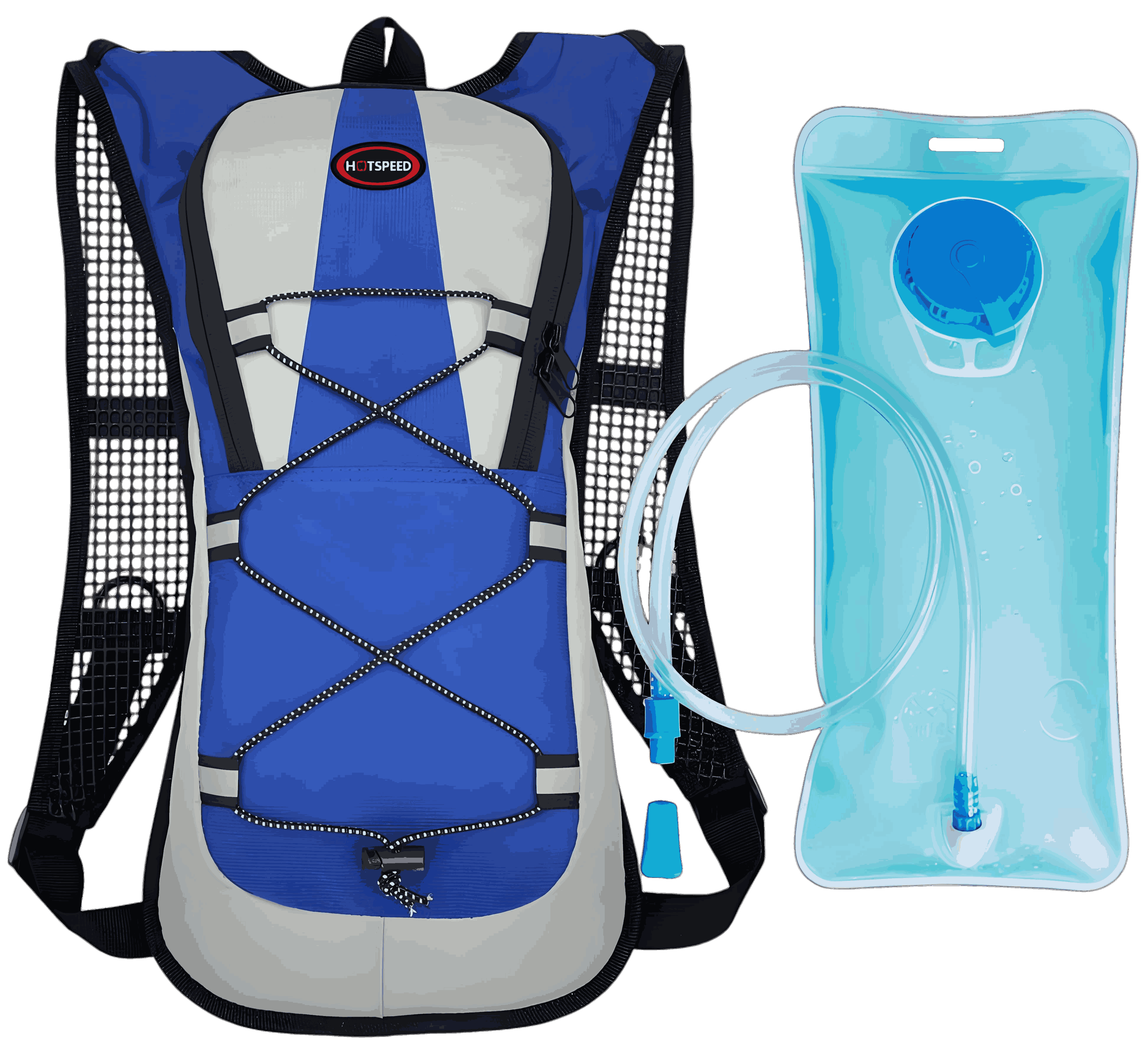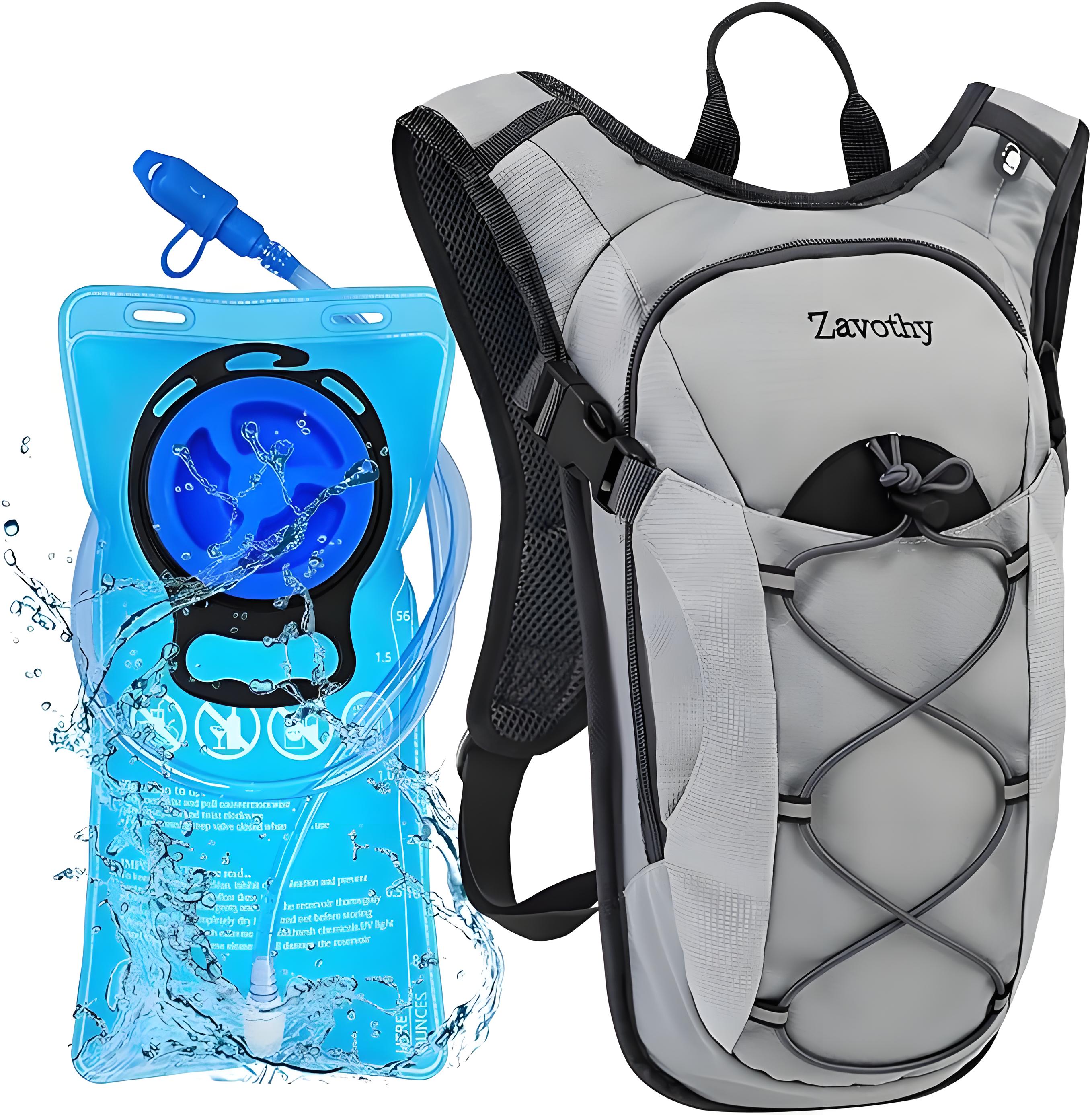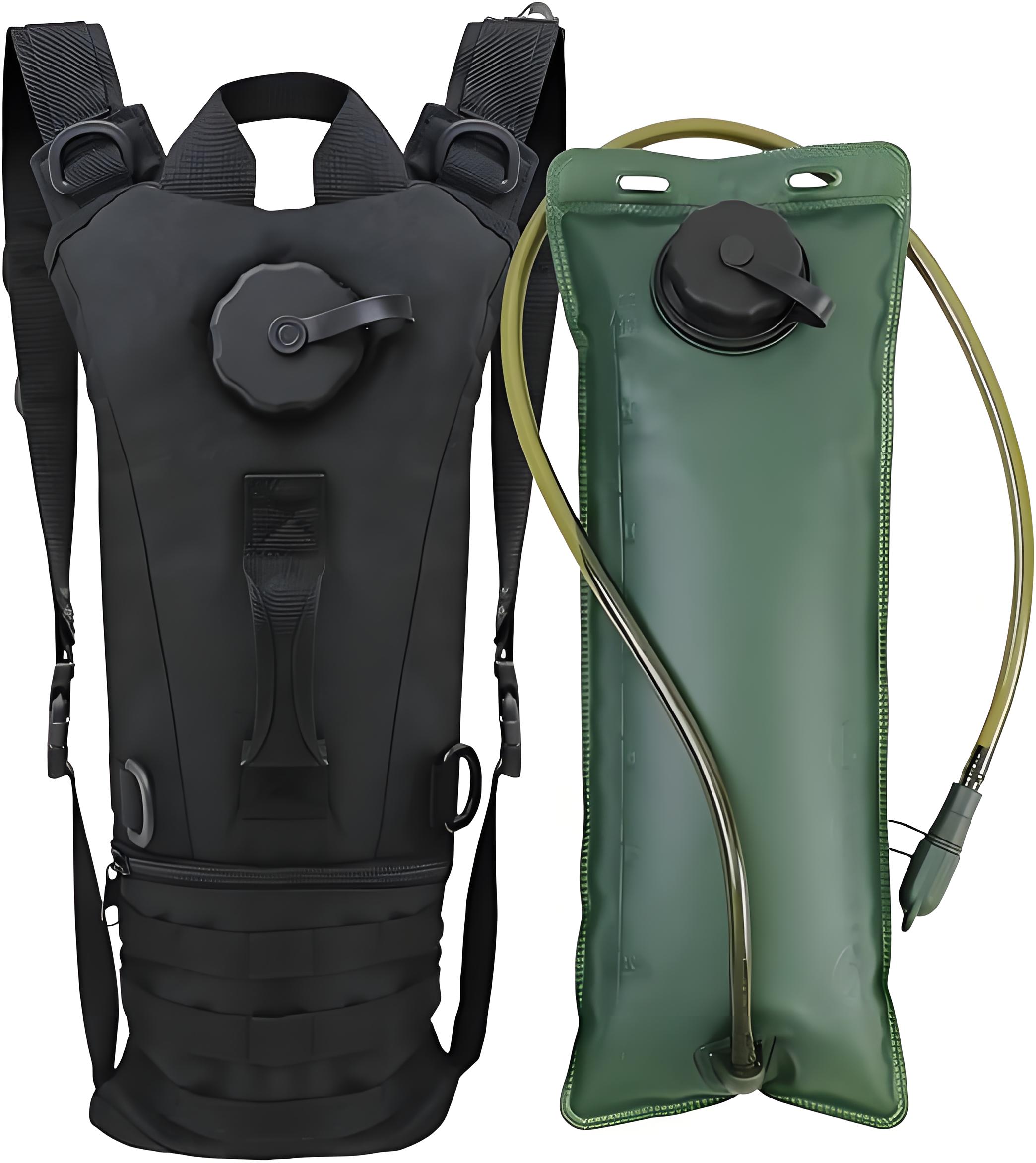As a seasoned expert in the cycling gear industry and a Google SEO professional, I’m well aware of the importance of staying hydrated during cycling. A hydration bladder for a cycling backpack, a seemingly simple piece of equipment, actually holds many secrets that many cyclists haven’t fully explored. Today, let me take you on a journey to uncover what a hydration bladder for a cycling backpack is truly used for and how it becomes an indispensable companion for cyclists.

1. The Basic Concept of a Hydration Bladder for Cycling Backpacks
A hydration bladder for a cycling backpack, as the name suggests, is a device installed inside a cycling backpack to store and deliver drinking water. It typically consists of a flexible water bladder, a drinking tube, and a bite valve, designed to be compact and convenient for cyclists to hydrate on the go.
Materials and Selection of Water Bladders
The material of the water bladder directly affects its durability, safety, and user experience. Currently, common materials for water bladders on the market include TPU (Thermoplastic Polyurethane), PVC (Polyvinyl Chloride), and silicone.
TPU Material: Known for its excellent wear resistance, tear resistance, and cold resistance, TPU is also non-toxic and odorless, meeting food safety standards. It is the preferred material for cycling water bladders.
PVC Material: Although relatively inexpensive, PVC has poor durability and may contain harmful substances, which could pose health risks with long-term use. Therefore, it is not recommended.
Silicone Material: Soft and elastic, silicone is costly and prone to collecting dust and dirt, making it relatively cumbersome to clean.
When selecting a water bladder, in addition to considering the material, one should also pay attention to its capacity, sealing, and ease of use. Generally, cycling water bladders have a capacity ranging from 1.5L to 3L, and the choice can be made based on personal needs and cycling duration.
Design of the Drinking Tube and Bite Valve
The design of the drinking tube and bite valve directly impacts the convenience and comfort of hydration for cyclists. A high-quality drinking tube should be long and flexible enough to allow cyclists to hydrate easily in various positions. The bite valve should be well-designed, comfortable to bite, and leak-proof.
2. The Functions and Advantages of a Hydration Bladder for Cycling Backpacks
The popularity of hydration bladders for cycling backpacks among cyclists can be attributed to their significant functions and advantages.
1. Convenient Hydration Without Stopping
During cycling, frequently stopping to hydrate not only disrupts the cycling rhythm but may also pose safety hazards. A hydration bladder for a cycling backpack allows cyclists to hydrate on the go through the drinking tube without needing to stop, greatly enhancing the convenience and safety of cycling.
2. Maintaining Water Balance and Enhancing Cycling Experience
During cycling, the body sweats profusely, leading to water loss. Failure to replenish water in a timely manner can easily lead to dehydration, affecting the cycling experience and physical health. A hydration bladder for a cycling backpack ensures that cyclists can replenish water at any time during the ride, maintaining water balance and thus enhancing the cycling experience.
3. Reducing Burden and Enhancing Comfort
Compared to traditional water bottles or kettles, hydration bladders for cycling backpacks are lighter and easier to carry. They can be directly installed inside the cycling backpack without adding extra burden. Additionally, since the water bladder is flexible, it can be adjusted according to the space inside the backpack, improving the backpack’s utilization rate and comfort.
4. Adapting to Various Cycling Environments
Whether it’s urban commuting, mountain biking, or long-distance travel, a hydration bladder for a cycling backpack can demonstrate its unique advantages. In urban commuting, it allows you to hydrate easily on crowded streets; in mountain biking, it ensures you can replenish water on rugged mountain trails; and in long-distance travel, it is your indispensable hydration partner.

3. Usage and Maintenance of a Hydration Bladder for Cycling Backpacks
Although hydration bladders for cycling backpacks offer numerous advantages, improper use or poor maintenance can affect their lifespan and performance. Here are some usage and maintenance suggestions for hydration bladders for cycling backpacks.
Preparation Before Use
Clean the Water Bladder: Before use, thoroughly clean the water bladder to remove any impurities or odors that may be present. You can use a mild detergent and water for cleaning, then rinse thoroughly with clean water and dry.
Check the Drinking Tube and Bite Valve: Ensure that the drinking tube and bite valve are not damaged or clogged, and that the bite valve bites comfortably and is leak-proof.
Install the Water Bladder: Carefully place the water bladder into the water bladder compartment inside the cycling backpack, ensuring that the drinking tube can smoothly extend outside the backpack.
Precautions During Use
Avoid High Temperatures: Do not expose the water bladder to high temperatures to prevent deformation or damage. Additionally, high temperatures may cause the water quality inside the bladder to deteriorate.
Replenish Water Regularly: Based on the cycling duration and sweat output, regularly replenish water through the drinking tube to prevent dehydration.
Pay Attention to Cleanliness: If the water bladder or drinking tube becomes contaminated during cycling, promptly rinse with clean water to prevent bacterial growth.
Maintenance After Use
Thorough Cleaning: After cycling, thoroughly clean the water bladder. You can use a specialized cleaner or a mild detergent for cleaning, then rinse thoroughly with clean water and dry.
Check for Damage: Carefully inspect the water bladder, drinking tube, and bite valve for any signs of damage or wear, and replace them promptly if necessary.
Proper Storage: Store the cleaned and dried water bladder in a dry, ventilated place, avoiding direct sunlight and humid environments.

4. A Guide to Purchasing a Hydration Bladder for Cycling Backpacks
Faced with a wide variety of hydration bladders for cycling backpacks on the market, how do you choose one that suits you? Here are some purchasing suggestions.
1. Determine Your Needs
Before choosing a hydration bladder for a cycling backpack, first clarify your needs. For example, how long do you usually cycle? How much water do you need to carry? What are your requirements for the material, capacity, and portability of the water bladder? Clarifying your needs will help you choose a more targeted product.
2. Pay Attention to Brand and Reputation
Choosing well-known brands and products with good reputations can significantly reduce the risk of purchasing inferior products. You can learn about the product’s reputation and performance by checking user reviews, professional evaluations, and discussions on social media.
3. Compare Materials and Performance
As mentioned earlier, the material of the water bladder directly affects its durability, safety, and user experience. When choosing, carefully compare the materials and performance of different products to select the one that best suits you.
4. Consider Price and Cost-Effectiveness
Price is not the sole criterion for judging the quality of a product, but you should also consider your budget and cost-effectiveness. When choosing, you can compare the prices and performance of different products to select the one with the highest cost-effectiveness.
5. Trial and Experience
If conditions permit, it’s best to try out the product personally to feel its comfort and ease of use. You can achieve this by participating in cycling events, visiting physical stores, or borrowing from friends.
5. Matching and Upgrading a Hydration Bladder for Cycling Backpacks
A hydration bladder for a cycling backpack does not exist in isolation; it can be matched and upgraded with other cycling gear to enhance the overall cycling experience.
1. Matching with Cycling Backpacks
A hydration bladder for a cycling backpack typically needs to be used in conjunction with a cycling backpack. When choosing a cycling backpack, pay attention to whether it is equipped with a dedicated water bladder compartment and a drinking tube outlet to ensure that the water bladder can be conveniently installed and used. Additionally, the capacity and comfort of the cycling backpack are also factors to consider.
2. Matching with Insulation Sleeves
In cold weather or during long-distance cycling, to maintain water temperature, you can consider equipping the water bladder with an insulation sleeve. The insulation sleeve can effectively reduce heat loss, allowing cyclists to drink warm water even in cold weather.
3. Upgrading with Filters
If you often cycle in the wild or in situations where the water source is uncertain, you can consider equipping the water bladder with a filter. The filter can remove impurities and bacteria from the water, ensuring the safety of drinking water. When choosing a filter, pay attention to its filtering effect, portability, and durability.

4. Linkage with Smart Devices
With the development of technology, some high-end hydration bladders for cycling backpacks already have the function of linking with smart devices. For example, you can monitor the water volume, water temperature, and other information inside the water bladder in real-time through a mobile app, and even receive intelligent recommendations for water intake based on your sweat output and exercise intensity. Although these functions are not essential, they can greatly enhance the convenience and intelligence level of cycling.
6. Common Problems and Solutions for Hydration Bladders for Cycling Backpacks
During the use of a hydration bladder for a cycling backpack, you may encounter some common problems. Here are some common problems and their solutions.
1. Water Bladder Leakage
Cause: It may be due to poor sealing of the water bladder or a loose connection at the drinking tube.
Solution: Check the sealing of the water bladder and the connection at the drinking tube to ensure there are no loose or damaged parts. If necessary, replace the sealing ring or reconnect the drinking tube.
2. Drinking Tube Blockage
Cause: It may be due to poor water quality or scaling on the inner wall of the drinking tube due to prolonged use without cleaning.
Solution: Clean the drinking tube with clean water or a specialized cleaner to ensure the inner wall is unobstructed. Regular cleaning can prevent blockage problems.
3. Bite Valve Leakage
Cause: It may be due to damage to the bite valve or poor biting.
Solution: Check if the bite valve is damaged or worn, and replace it promptly if necessary. Additionally, ensure a tight bite when using it to prevent leakage.
4. Odor in the Water Bladder
Cause: It may be due to prolonged use without cleaning or poor water quality, leading to bacterial growth on the inner wall of the water bladder.
Solution: Thoroughly clean the water bladder with a mild detergent and water, and rinse thoroughly with clean water. You can use a specialized cleaner or disinfectant for deep cleaning periodically.
7. Future Development Trends of Hydration Bladders for Cycling Backpacks
With the popularization of cycling culture and the development of technology, hydration bladders for cycling backpacks are also constantly innovating and upgrading. Here are some possible future development trends.
1. Intelligence
Future hydration bladders for cycling backpacks may become more intelligent, with functions such as real-time monitoring of water volume, water temperature, and water quality, and even remote control and personalized settings through mobile apps.
2. Environmental Friendliness
With the enhancement of environmental awareness, future hydration bladders for cycling backpacks may adopt more environmentally friendly materials and production processes to reduce their impact on the environment.
3. Lightweight and Portability
To meet the needs of cyclists for lightweight and portability, future hydration bladders for cycling backpacks may adopt thinner materials and more compact designs to improve carrying convenience.

4. Multi-Functionality
In addition to the basic hydration function, future hydration bladders for cycling backpacks may integrate more functions, such as insulation, filtration, and lighting, to meet the needs of cyclists in different scenarios.
Related Q&A
Q1: Is a hydration bladder for a cycling backpack suitable for all cycling scenarios?
A1: A hydration bladder for a cycling backpack is suitable for most cycling scenarios, including urban commuting, mountain biking, and long-distance travel. However, in some extreme environments, such as high temperatures, cold weather, or situations where the water source is uncertain, additional equipment such as insulation sleeves or filters may be needed to enhance the user experience.
Q2: Does a hydration bladder for a cycling backpack need to be replaced regularly?
A2: The lifespan of a hydration bladder for a cycling backpack depends on its material, frequency of use, and maintenance. Generally, if the water bladder has no signs of damage or wear and is cleaned and maintained properly, it can be used for a long time. However, if you find problems such as leakage, odor, or deformation in the water bladder, it should be replaced promptly.
Q3: Can a hydration bladder for a cycling backpack be used to carry other beverages?
A3: A hydration bladder for a cycling backpack is mainly used to carry drinking water, but it can also be used to carry other beverages such as juice or sports drinks. However, it should be noted that some beverages may contain acidic or alkaline components, which may corrode or damage the material of the water bladder with long-term use. Therefore, when carrying other beverages, it is recommended to conduct a small-scale test first and clean the water bladder regularly to avoid residue.
Q4: Can the length of the drinking tube of a hydration bladder for a cycling backpack be adjusted?
A4: The length of the drinking tube of most hydration bladders for cycling backpacks can be adjusted to allow cyclists to adjust it according to their needs and cycling postures. However, the specific adjustment method may vary by product. It is recommended to carefully read the product manual or consult the salesperson before use.
Q5: How should I choose the capacity of a hydration bladder for a cycling backpack?
A5: The choice of capacity for a hydration bladder for a cycling backpack should be based on personal needs and cycling duration. Generally, a 1.5L to 2L water bladder is suitable for short-distance cycling or daily commuting; a 2L to 3L water bladder is suitable for long-distance cycling or scenarios where more water needs to be carried. However, it should be noted that the larger the capacity, the greater the weight and volume of the water bladder, so a balance needs to be struck between capacity and portability.
A hydration bladder for a cycling backpack, as an indispensable hydration device for cyclists, offers numerous advantages such as convenient hydration, maintaining water balance, reducing burden, and adapting to various cycling environments. By understanding its basic concept, functions and advantages, usage and maintenance, purchasing guide, matching and upgrading, as well as common problems and solutions, we can better choose and use a hydration bladder for a cycling backpack to enhance the overall cycling experience. I hope this article has been helpful to you!